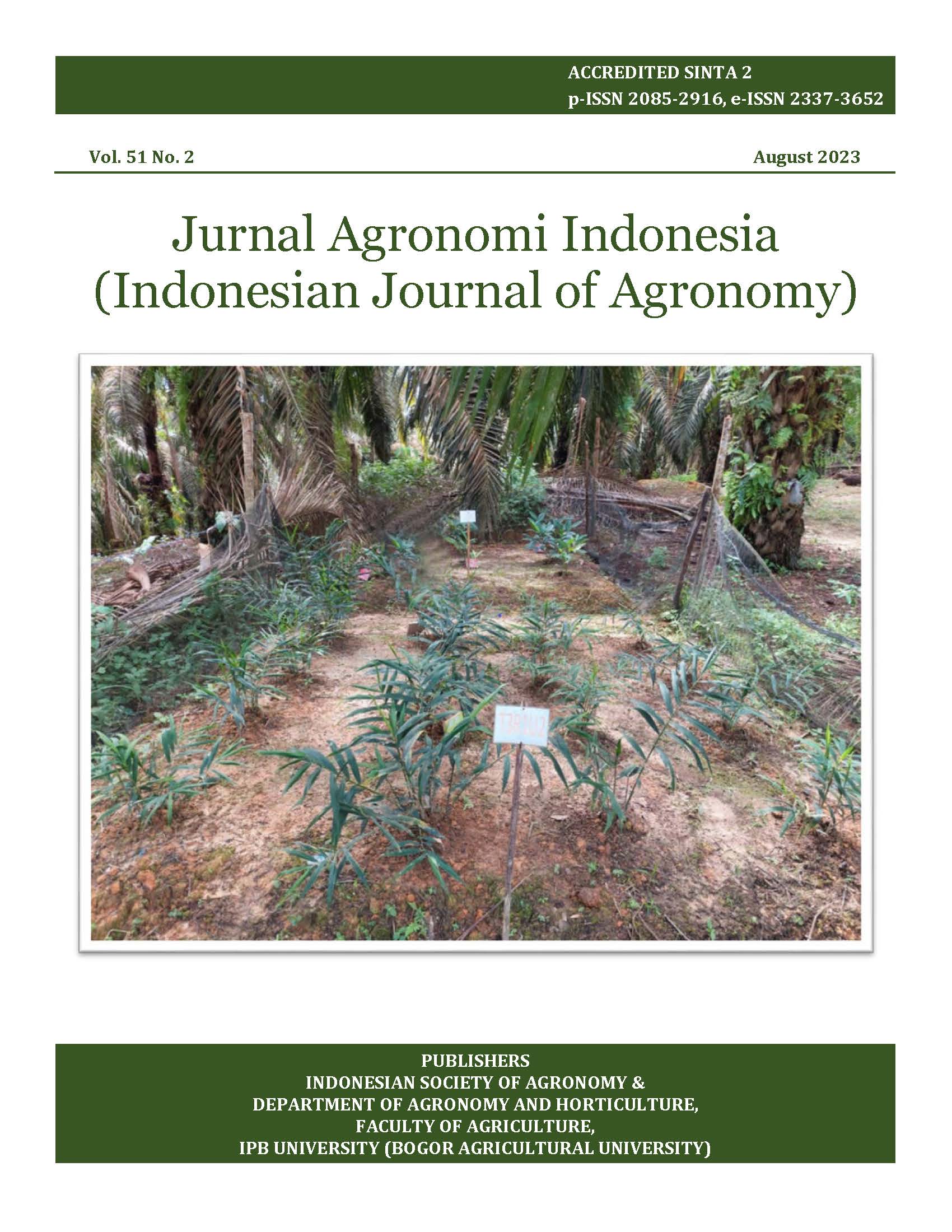Genetic variability and stability analysis of chili in three environments
Abstract
Chili is an important vegetable crop consumed by most Indonesian people. Chili production is affected by the limited varieties and low adaptability to growing in different environments. This study aimed to identify the variability of 22 chili pepper on morphology, the genotype x environment interaction, and the stability of 10 chili pepper genotypes in 3 different environments. The study was conducted from July 2020 to February 2022 in Sleman DIY, Bogor, and Blitar. The experimental design used a single-factor randomized complete block design, each consisting of three replicates. The genotypes evaluated were HCR 17-003, HCR 17-004, HCR 17-007, HCR 17-008, HCR17-012, HCR 17-013, HCR 17-014, HCR 17-017, F7-1, F7-2, F7-3, Ca011, Ca013, Ca020, Ca021, Cf002, Cf005, Cf007, Cf010, Cf015, Bonita, and Loblita. Ten genotypes were evaluated in stability analysis, i.e., PKHT A, PKHT B, Bara, Genie, Centil, PKHT C, PKHT D, Bonita, Sona, and Tunduk. The biplot analysis for genetic diversity study showed a total diversity was 40.5% for the two main components. The genotype x environment interaction had a significant effect on productivity. PKHT C and Sona were identified as stable based on the Francis-Kannenberg method. PKHT C, Sona, PKHT B, and Bonita were stable based on the Wricke method. PKHT A and Bonita were stable based on Finlay-Wilkilson methods. PKHT B, PKHT C, Sona, and Bonita were identified as stable based on the AMMI method. The genotype which is stable based on all stability methods was PKHT C.
Keywords: AMMI; GxE interaction; parametric stability; variety.













